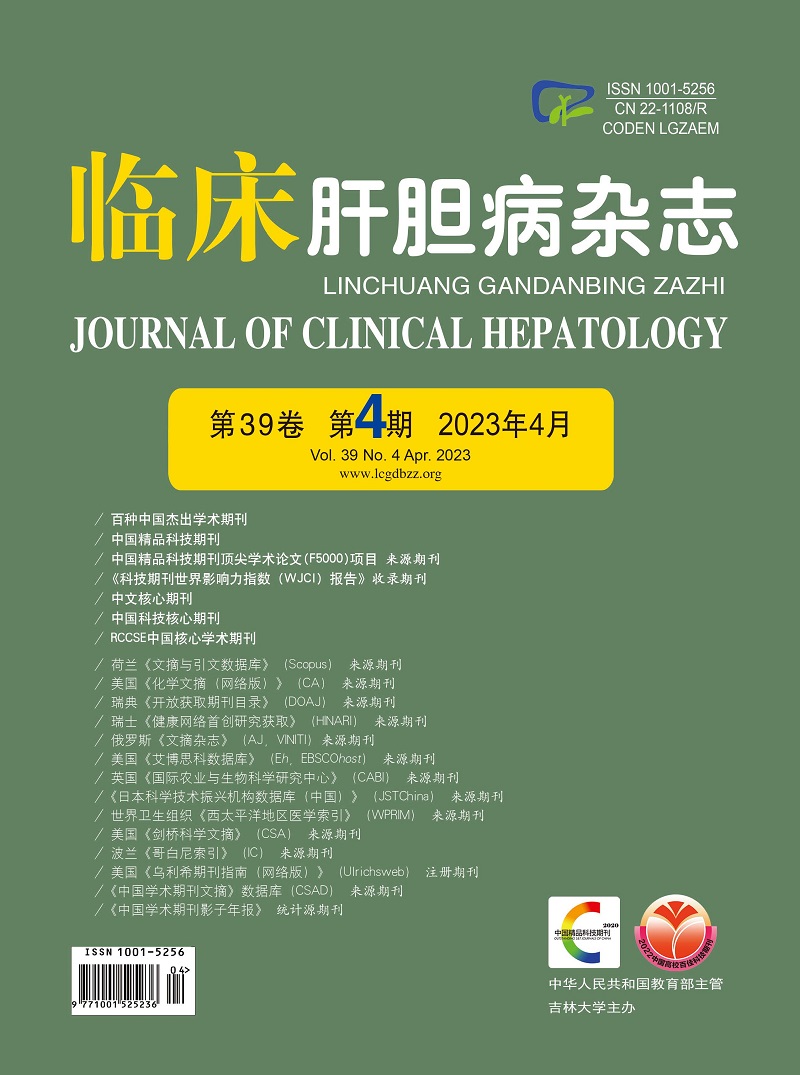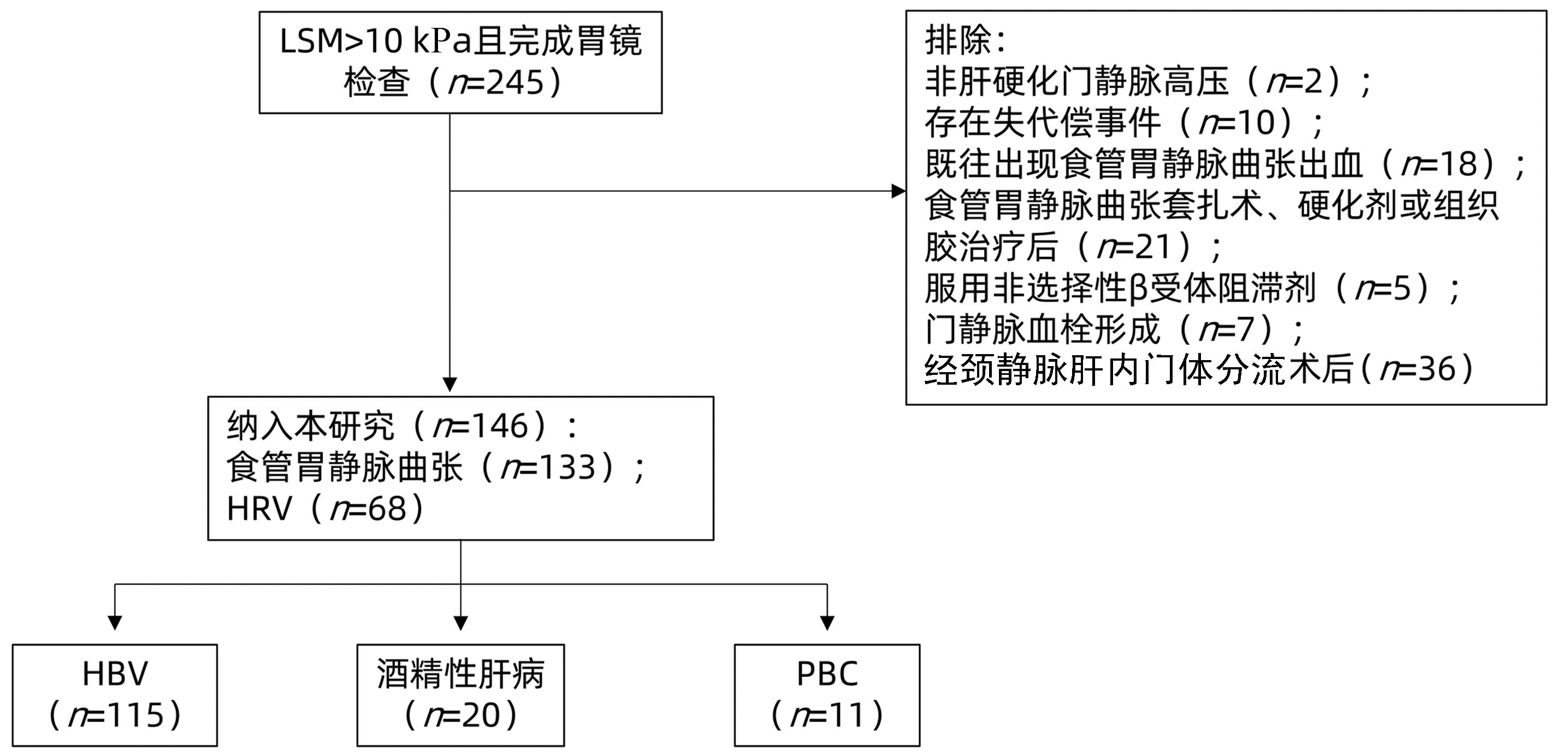| [1] |
D'AMICO G, GARCIA-TSAO G, PAGLIARO L. Natural history and prognostic indicators of survival in cirrhosis: a systematic review of 118 studies[J]. J Hepatol, 2006, 44(1): 217-231. DOI: 10.1016/j.jhep.2005.10.013. |
| [2] |
FORTUNE BE, GARCIA-TSAO G, CIARLEGLIO M, et al. Child-turcotte-pugh class is best at stratifying risk in variceal hemorrhage: analysis of a us multicenter prospective study[J]. J Clin Gastroenterol, 2017, 51(5): 446-453. DOI: 10.1097/MCG.0000000000000733. |
| [3] |
SUN X, ZHANG A, ZHOU T, et al. Partial splenic embolization combined with endoscopic therapies and NSBB decreases the variceal rebleeding rate in cirrhosis patients with hypersplenism: a multicenter randomized controlled trial[J]. Hepatol Int, 2021, 15(3): 741-752. DOI: 10.1007/s12072-021-10155-0. |
| [4] |
KIM DJ, CHOI MS. Life-sustaining treatment and palliative care in patients with liver cirrhosis-legal, ethical, and practical issues[J]. Clin Mol Hepatol, 2017, 23(2): 115-122. DOI: 10.3350/cmh.2017.0018. |
| [5] |
LAU J, YU Y, TANG R, et al. Timing of endoscopy for acute upper gastrointestinal bleeding[J]. N Engl J Med, 2020, 382(14): 1299-1308. DOI: 10.1056/NEJMoa1912484. |
| [6] |
GARCIA-TSAO G, ABRALDES JG, BERZIGOTTI A, et al. Portal hypertensive bleeding in cirrhosis: Risk stratification, diagnosis, and management: 2016 practice guidance by the American Association for the study of liver diseases[J]. Hepatology, 2017, 65(1): 310-335. DOI: 10.1002/hep.28906. |
| [7] |
SUK KT. Hepatic venous pressure gradient: clinical use in chronic liver disease[J]. Clin Mol Hepatol, 2014, 20(1): 6-14. DOI: 10.3350/cmh.2014.20.1.6. |
| [8] |
STAFYLIDOU M, PASCHOS P, KATSOULA A, et al. Performance of Baveno Ⅵ and Expanded Baveno Ⅵ criteria for excluding high-risk varices in patients with chronic liver diseases: a systematic review and meta-analysis[J]. Clin Gastroenterol Hepatol, 2019, 17(9): 1744-1755. e11. DOI: 10.1016/j.cgh.2019.04.062. |
| [9] |
AUGUSTIN S, PONS M, MAURICE JB, et al. Expanding the Baveno Ⅵ criteria for the screening of varices in patients with compensated advanced chronic liver disease[J]. Hepatology, 2017, 66(6): 1980-1988. DOI: 10.1002/hep.29363. |
| [10] |
IRANMANESH P, VAZQUEZ O, TERRAZ S, et al. Accurate computed tomography-based portal pressure assessment in patients with hepatocellular carcinoma[J]. J Hepatol, 2014, 60(5): 969-974. DOI: 10.1016/j.jhep.2013.12.015. |
| [11] |
PONS M, AUGUSTIN S, SCHEINER B, et al. Noninvasive diagnosis of portal hypertension in patients with compensated advanced chronic liver disease[J]. Am J Gastroenterol, 2021, 116(4): 723-732. DOI: 10.14309/ajg.0000000000000994. |
| [12] |
Chinese Society of Hepatology, Chinese Medical Association; Chinese Society of Gastroenterology, Chinese Medical Association; Chinese Society of Endoscopy, Chinese Medical Association. Guidelines for the diagnosis and treatment of esophageal and gastric variceal bleeding in cirrhotic portal hypertension[J]. J Clin Hepatol, 2016, 32(2): 203-219. DOI: 10.3969/j.issn.1001-5256.2016.02.002. |
| [13] |
ABRALDES JG, BUREAU C, STEFANESCU H, et al. Noninvasive tools and risk of clinically significant portal hypertension and varices in compensated cirrhosis: The"Anticipate"study[J]. Hepatology, 2016, 64(6): 2173-2184. DOI: 10.1002/hep.28824. |
| [14] |
QI XL. New techniques for diagnosis and monitoring of portal hypertension in liver cancer (Part)[J/CD]. Chin J Exp Clin Infect Dis (Electronic Edition), 2021, 15(1): 72. DOI: 10.3877/cma.j.issn.1674-1358.2021.01.101.
祁小龙. 肝癌门静脉高压症诊断与监测新技术(上)[J/CD]. 中华实验和临床感染病杂志(电子版), 2021, 15(1): 72. DOI: 10.3877/cma.j.issn.1674-1358.2021.01.101.
|
| [15] |
QI XL. New techniques for diagnosis and monitoring of portal hypertension in liver cancer (Part Ⅱ)[J/CD]. Chin J Exp Clin Infect Dis (Electronic Edition), 2021, 15(2): 144. DOI: 10.3877/cma.j.issn.1674-1358.2021.02.101
祁小龙. 肝癌门静脉高压症诊断与监测的新技术(下)[J/CD]. 中华实验和临床感染病杂志(电子版), 2021, 15(2): 144. DOI: 10.3877/cma.j.issn.1674-1358.2021.02.101
|
| [16] |
REVERTER E, TANDON P, AUGUSTIN S, et al. A MELD-based model to determine risk of mortality among patients with acute variceal bleeding[J]. Gastroenterology, 2014, 146(2): 412-419. e3. DOI: 10.1053/j.gastro.2013.10.018. |
| [17] |
European Association for Study of Liver, Asociacion Latinoamericana para el Estudio del Higado. EASL-ALEH Clinical Practice Guidelines: Non-invasive tests for evaluation of liver disease severity and prognosis[J]. J Hepatol, 2015, 63(1): 237-264. DOI: 10.1016/j.jhep.2015.04.006. |
| [18] |
PALANIYAPPAN N, COX E, BRADLEY C, et al. Non-invasive assessment of portal hypertension using quantitative magnetic resonance imaging[J]. J Hepatol, 2016, 65(6): 1131-1139. DOI: 10.1016/j.jhep.2016.07.021. |
| [19] |
de FRANCHIS R, BOSCH J, GARCIA-TSAO G, et al. Baveno Ⅶ-Renewing consensus in portal hypertension[J]. J Hepatol, 2022, 76(4): 959-974. DOI: 10.1016/j.jhep.2021.12.022. |
| [20] |
BUCK M, GARCIA-TSAO G, GROSZMANN RJ, et al. Novel inflammatory biomarkers of portal pressure in compensated cirrhosis patients[J]. Hepatology, 2014, 59(3): 1052-1059. DOI: 10.1002/hep.26755. |
| [21] |
WANG S, HUANG Y, HU W, et al. Detachable string magnetically controlled capsule endoscopy for detecting high-risk varices in compensated advanced chronic liver disease (CHESS1801): A prospective multicenter study[J]. Lancet Reg Health West Pac, 2021, 6: 100072. DOI: 10.1016/j.lanwpc.2020.100072. |
| [22] |
CHANG PE, TAN CK, CHEAH CC, et al. Validation of the Expanded Baveno-Ⅵ criteria for screening gastroscopy in asian patients with compensated advanced chronic liver disease[J]. Dig Dis Sci, 2021, 66(4): 1343-1348. DOI: 10.1007/s10620-020-06334-y. |
| [23] |
HU Y, WEN Z. Validation and comparison of non-invasive prediction models based on liver stiffness measurement to identify patients who could avoid gastroscopy[J]. Sci Rep, 2021, 11(1): 150. DOI: 10.1038/s41598-020-80136-0. |
| [24] |
DAJTI E, RAVAIOLI F, COLECCHIA A, et al. Are the Expanded Baveno Ⅵ Criteria really safe to screen compensated cirrhotic patients for high-risk varices?[J]. Dig Liver Dis, 2019, 51(3): 456-457. DOI: 10.1016/j.dld.2018.12.013. |
| [25] |
KANG Y, PARK S, KIM S, et al. Validating the BAVENO Ⅵ criteria to identify low risk biliary atresia patients without endoscopy for esophageal varix[J]. Clin Res Hepatol Gastroenterol, 2021, 45(1): 101437. DOI: 10.1016/j.clinre.2020.04.007. |
| [26] |
ZHENG KI, LIU C, LI J, et al. Validation of Baveno Ⅵ and expanded Baveno Ⅵ criteria to identify high-risk varices in patients with MAFLD-related compensated cirrhosis[J]. J Hepatol, 2020, 73(6): 1571-1573. DOI: 10.1016/j.jhep.2020.06.042. |
| [27] |
THABUT D, BUREAU C, LAYESE R, et al. Validation of Baveno Ⅵ criteria for screening and surveillance of esophageal varices in patients with compensated cirrhosis and a sustained response to antiviral therapy[J]. Gastroenterology, 2019, 156(4): 997-1009. e5. DOI: 10.1053/j.gastro.2018.11.053. |
| [28] |
GIANNINI EG, de MARIA C, CRESPI M, et al. Course of oesophageal varices and performance of noninvasive predictors following hepatitis C virus clearance in compensated advanced chronic liver disease[J]. Eur J Clin Invest, 2020, 50(5): e13231. DOI: 10.1111/eci.13231. |
| [29] |
LEE HA, KIM SU, SEO YS, et al. Prediction of the varices needing treatment with non-invasive tests in patients with compensated advanced chronic liver disease[J]. Liver Int, 2019, 39(6): 1071-1079. DOI: 10.1111/liv.14036. |














 DownLoad:
DownLoad:

